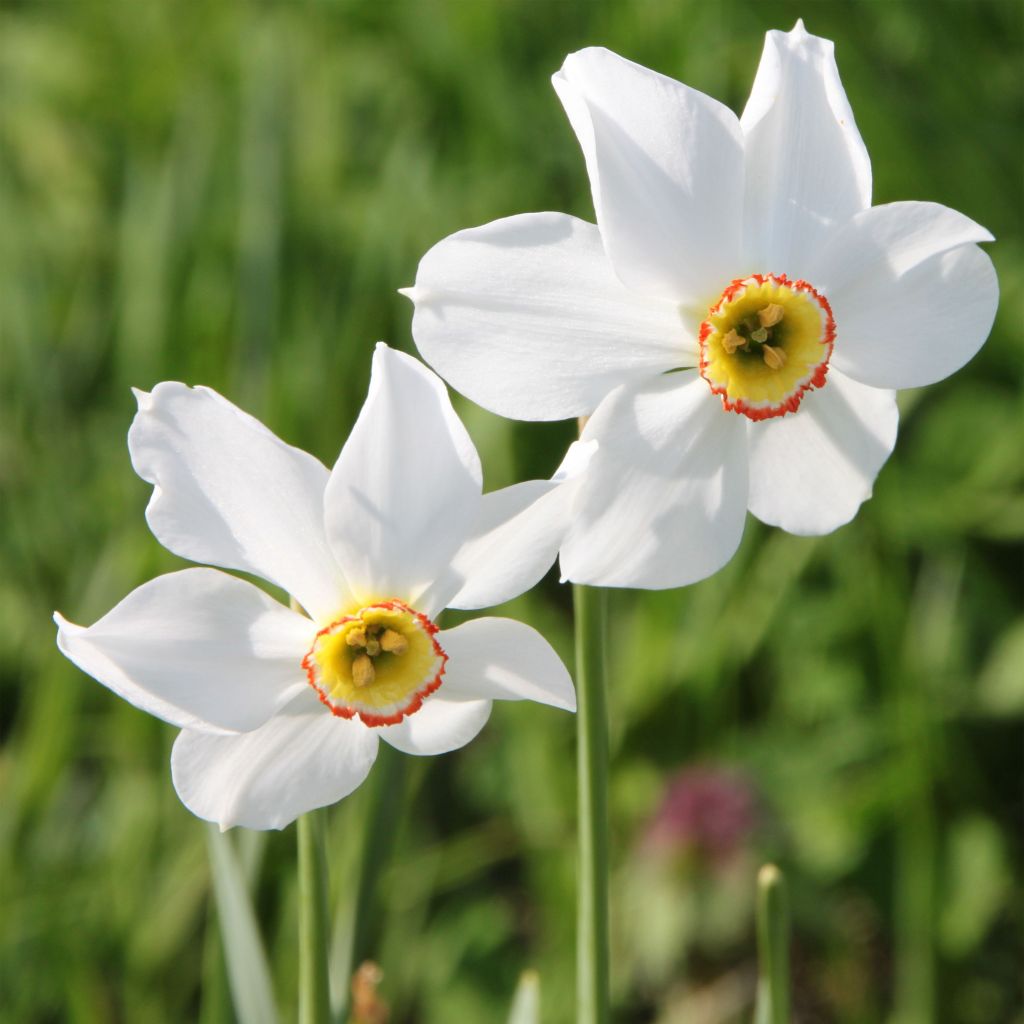

Narcissus poeticus recurvus - Daffodil
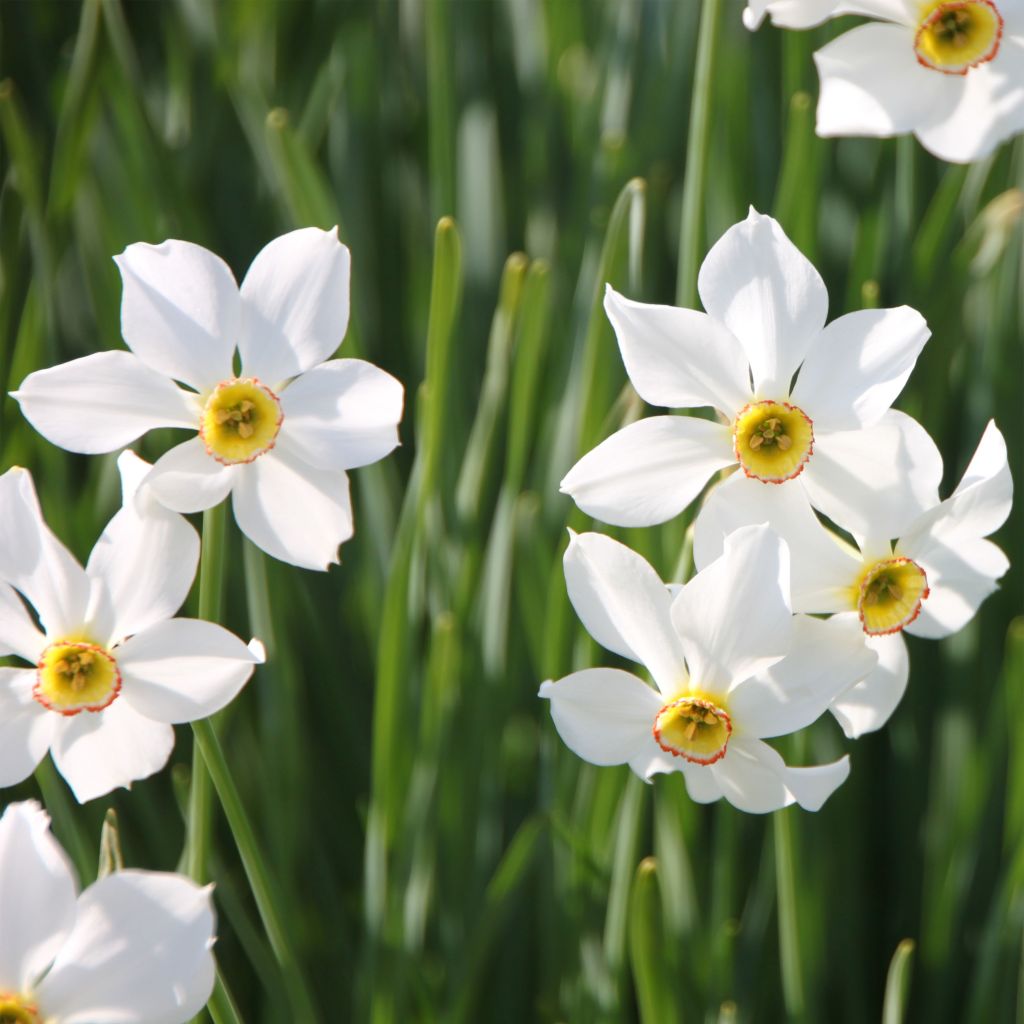

Narcissus poeticus recurvus - Daffodil
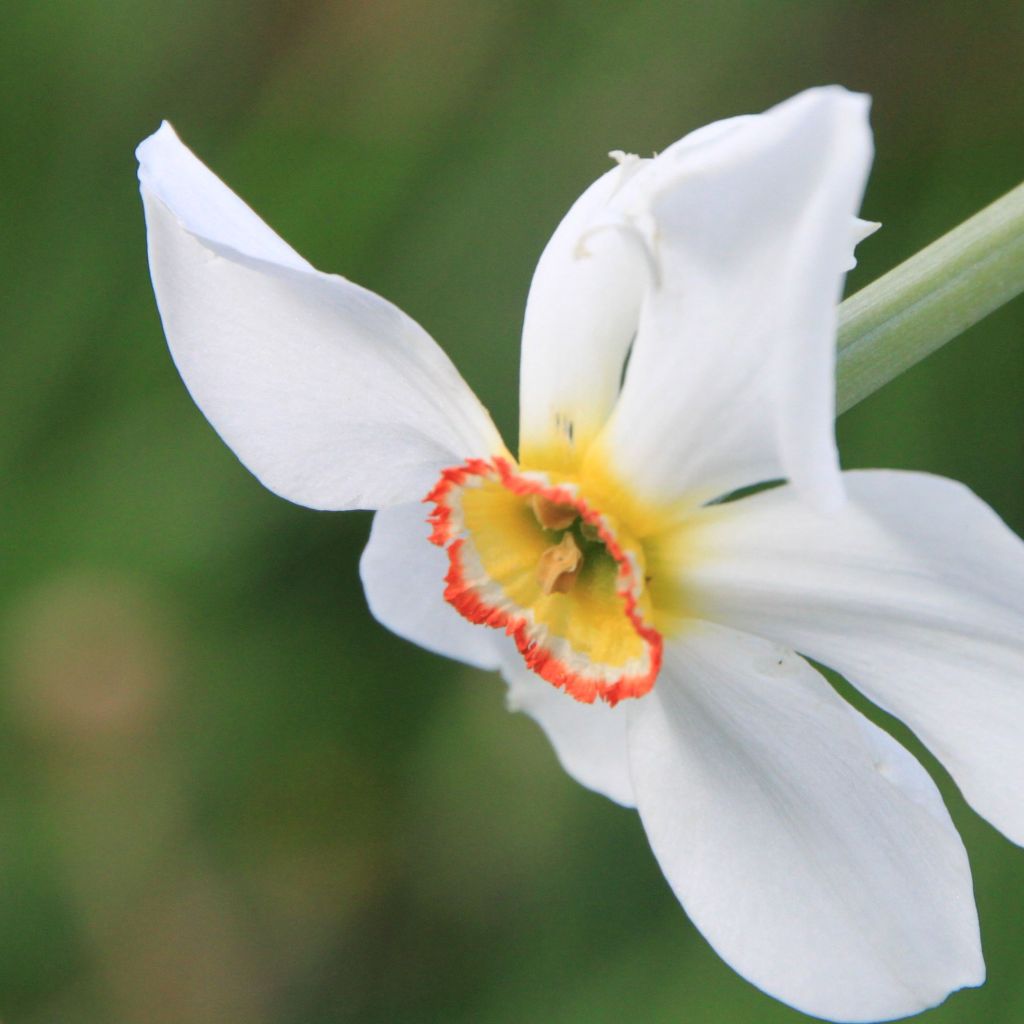

Narcissus poeticus recurvus - Daffodil
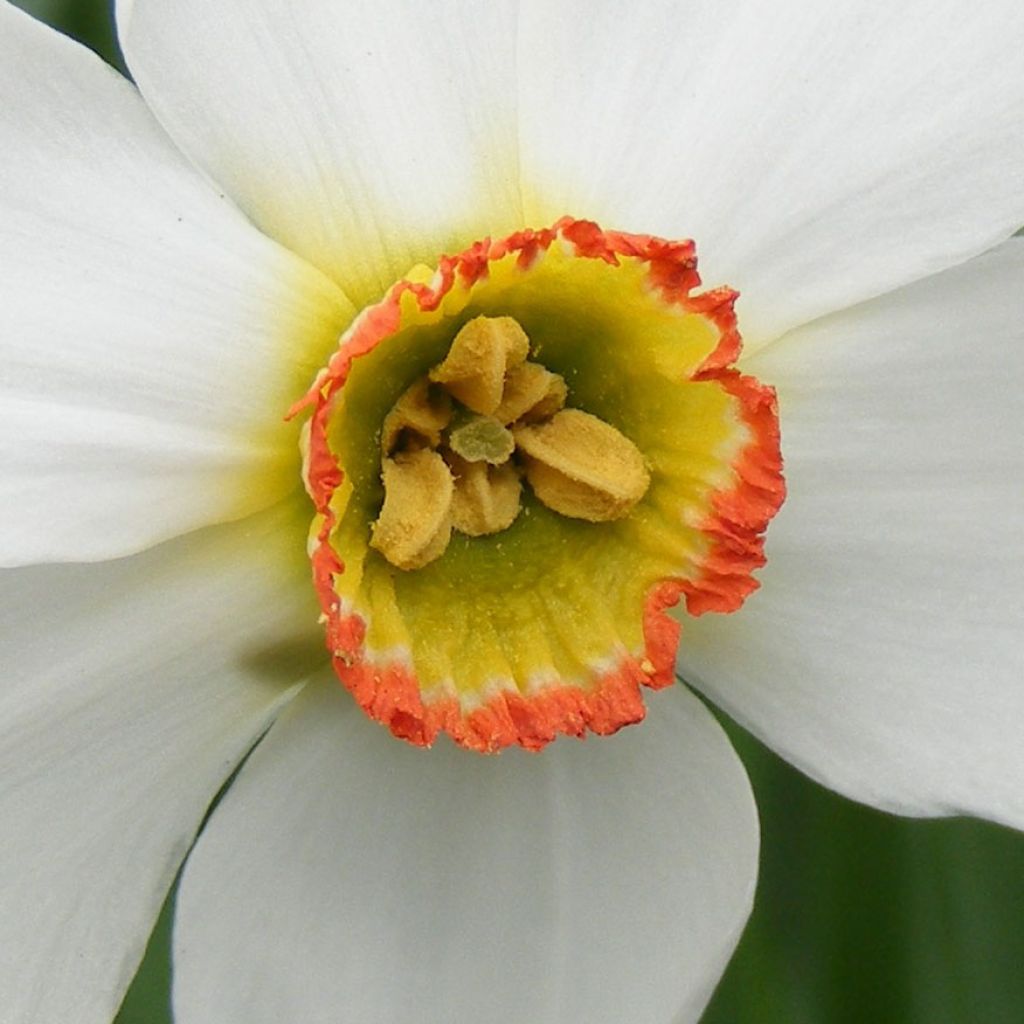

Narcissus poeticus recurvus - Daffodil
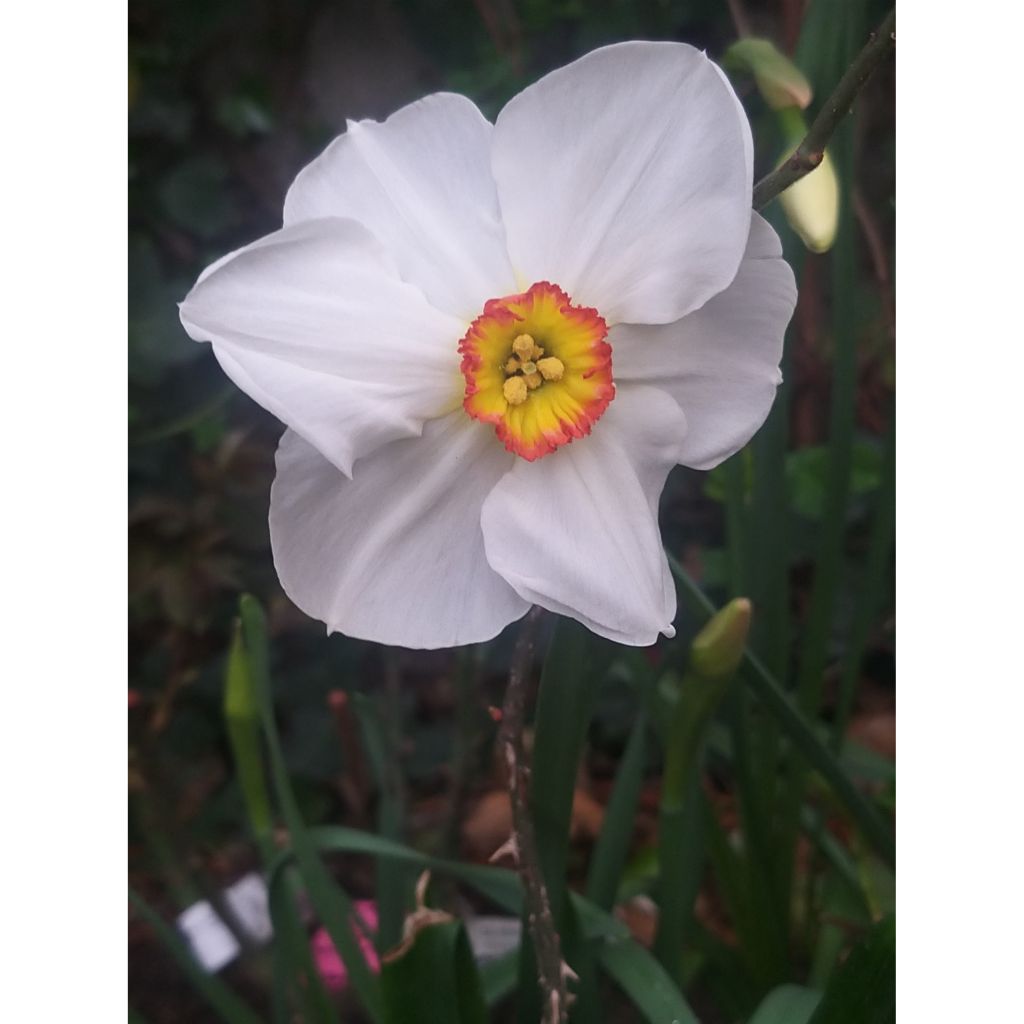

Narcissus poeticus recurvus - Daffodil
Narcissus poeticus recurvus - Daffodil
Narcissus poeticus recurvus
Poet's Daffodil, Poet's Narcissus, Daffodil, Narcissus
This plant carries a 6 months recovery warranty
More information
We guarantee the quality of our plants for a full growing cycle, and will replace at our expense any plant that fails to recover under normal climatic and planting conditions.
From €5.90 for pickup delivery and €6.90 for home delivery
Express home delivery from €8.90.
Delivery to Corse prohibited: UE law prohibits the import of this plant from mainland France to Corse as part of the fight against Xylella fastidiosa. Please accept our sincere apologies.
More information


Does this plant fit my garden?
Set up your Plantfit profile →
Description
The Narcissus poeticus recurvus, sometimes called the true poets' narcissus, is a late-flowering variety. Its delicately fragrant flowers have petals that are pure white with a small yellow crown in the centre, bordered by a red-orange edge. Each stem bears only one flower.
Native to Western Europe, the narcissus belongs to the Amaryllidaceae family. The genus Narcissus includes many species and varieties, both of botanical origin (such as the poets' narcissus) and horticultural. The jonquil (Narcissus jonquilla), with its yellow flowers and leaves similar to those of the rush, is one of the species in the Narcissus genus. In some regions, the yellow narcissus or trumpet narcissus (Narcissus pseudonarcissus) is sometimes called a jonquil, hence the frequent confusion between jonquil and narcissus.
The narcissus is a bulbous plant with slightly pointed linear leaves, which are sometimes slightly bluish-green in colour. The hollow stems end in single or double flowers, with 6 petals in white or yellow. In the centre, there is often a crown in shades of yellow or orange. The Narcissus poeticus recurvus produces delicately fragrant flowers with pure white petals and a small yellow crown bordered by a red-orange edge. The wild species grows spontaneously in nature, particularly in alpine meadows.
The flowering of narcissus lasts about fifteen days and takes place between February and May, depending on the varieties (May for this variety). The flowers are perfectly suited for bouquets, as long as they are not mixed with other flowers, as the sap releases a substance that accelerates wilting.
Easy to cultivate, the narcissus can be planted in various locations in the garden: in the foreground of a shrub bed, along the edge, in the middle of a short grass meadow, or grown in a pot. It pairs beautifully with muscari, early tulips, and hyacinths, and naturalises easily. However, be cautious as the bulb, flower, and leaves are toxic.
Report an error about the product description
Narcissus poeticus recurvus - Daffodil in pictures
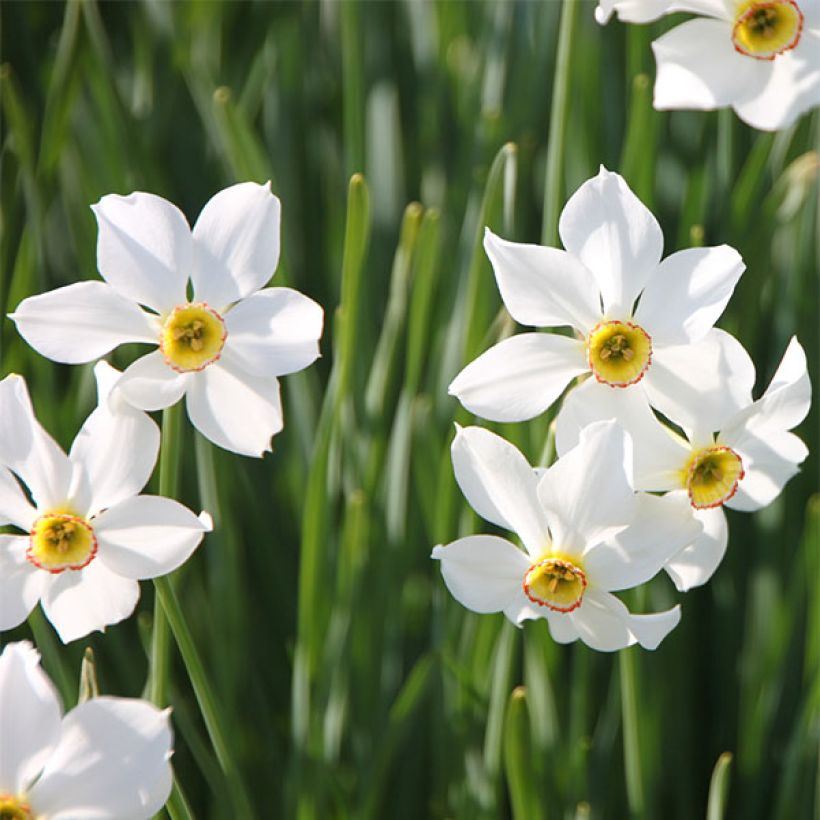

Plant habit
Flowering
Foliage
Botanical data
Narcissus
poeticus
recurvus
Amaryllidaceae
Poet's Daffodil, Poet's Narcissus, Daffodil, Narcissus
Western Europe
Planting and care
Daffodils are not demanding on the nature of the soil and thrive in ordinary soils, preferably moist and rich. Plant the bulbs in a sunny or semi-shaded location. In order to spread out the flowering, install them in several locations, more or less sunny, as daffodils bloom depending on the amount of sunlight.
Planting is done from September to November for spring flowering. Plant the bulbs at a depth of 15 cm (6in), with the pointed end facing upwards, maintaining a spacing of 8 cm (3in). You can plant them in groups of 5 to 10 bulbs, in order to achieve a beautiful colour effect in spring.
Daffodils require little maintenance. Remove faded flowers to avoid depleting the bulb. After flowering, let the foliage die naturally and only cut it when it turns yellow, in order to promote the accumulation of new reserves in the bulb.
Daffodils can remain in place from one year to the next. If the clumps become dense and less floriferous, delicately remove the bulbs when the foliage is dry and divide them before immediately replanting them.
Planting period
Intended location
Care
-
, onOrder confirmed
Reply from on Promesse de fleurs
Haven't found what you were looking for?
Hardiness is the lowest winter temperature a plant can endure without suffering serious damage or even dying. However, hardiness is affected by location (a sheltered area, such as a patio), protection (winter cover) and soil type (hardiness is improved by well-drained soil).

Photo Sharing Terms & Conditions
In order to encourage gardeners to interact and share their experiences, Promesse de fleurs offers various media enabling content to be uploaded onto its Site - in particular via the ‘Photo sharing’ module.
The User agrees to refrain from:
- Posting any content that is illegal, prejudicial, insulting, racist, inciteful to hatred, revisionist, contrary to public decency, that infringes on privacy or on the privacy rights of third parties, in particular the publicity rights of persons and goods, intellectual property rights, or the right to privacy.
- Submitting content on behalf of a third party;
- Impersonate the identity of a third party and/or publish any personal information about a third party;
In general, the User undertakes to refrain from any unethical behaviour.
All Content (in particular text, comments, files, images, photos, videos, creative works, etc.), which may be subject to property or intellectual property rights, image or other private rights, shall remain the property of the User, subject to the limited rights granted by the terms of the licence granted by Promesse de fleurs as stated below. Users are at liberty to publish or not to publish such Content on the Site, notably via the ‘Photo Sharing’ facility, and accept that this Content shall be made public and freely accessible, notably on the Internet.
Users further acknowledge, undertake to have ,and guarantee that they hold all necessary rights and permissions to publish such material on the Site, in particular with regard to the legislation in force pertaining to any privacy, property, intellectual property, image, or contractual rights, or rights of any other nature. By publishing such Content on the Site, Users acknowledge accepting full liability as publishers of the Content within the meaning of the law, and grant Promesse de fleurs, free of charge, an inclusive, worldwide licence for the said Content for the entire duration of its publication, including all reproduction, representation, up/downloading, displaying, performing, transmission, and storage rights.
Users also grant permission for their name to be linked to the Content and accept that this link may not always be made available.
By engaging in posting material, Users consent to their Content becoming automatically accessible on the Internet, in particular on other sites and/or blogs and/or web pages of the Promesse de fleurs site, including in particular social pages and the Promesse de fleurs catalogue.
Users may secure the removal of entrusted content free of charge by issuing a simple request via our contact form.
The flowering period indicated on our website applies to countries and regions located in USDA zone 8 (France, the United Kingdom, Ireland, the Netherlands, etc.)
It will vary according to where you live:
- In zones 9 to 10 (Italy, Spain, Greece, etc.), flowering will occur about 2 to 4 weeks earlier.
- In zones 6 to 7 (Germany, Poland, Slovenia, and lower mountainous regions), flowering will be delayed by 2 to 3 weeks.
- In zone 5 (Central Europe, Scandinavia), blooming will be delayed by 3 to 5 weeks.
In temperate climates, pruning of spring-flowering shrubs (forsythia, spireas, etc.) should be done just after flowering.
Pruning of summer-flowering shrubs (Indian Lilac, Perovskia, etc.) can be done in winter or spring.
In cold regions as well as with frost-sensitive plants, avoid pruning too early when severe frosts may still occur.
The planting period indicated on our website applies to countries and regions located in USDA zone 8 (France, United Kingdom, Ireland, Netherlands).
It will vary according to where you live:
- In Mediterranean zones (Marseille, Madrid, Milan, etc.), autumn and winter are the best planting periods.
- In continental zones (Strasbourg, Munich, Vienna, etc.), delay planting by 2 to 3 weeks in spring and bring it forward by 2 to 4 weeks in autumn.
- In mountainous regions (the Alps, Pyrenees, Carpathians, etc.), it is best to plant in late spring (May-June) or late summer (August-September).
The harvesting period indicated on our website applies to countries and regions in USDA zone 8 (France, England, Ireland, the Netherlands).
In colder areas (Scandinavia, Poland, Austria...) fruit and vegetable harvests are likely to be delayed by 3-4 weeks.
In warmer areas (Italy, Spain, Greece, etc.), harvesting will probably take place earlier, depending on weather conditions.
The sowing periods indicated on our website apply to countries and regions within USDA Zone 8 (France, UK, Ireland, Netherlands).
In colder areas (Scandinavia, Poland, Austria...), delay any outdoor sowing by 3-4 weeks, or sow under glass.
In warmer climes (Italy, Spain, Greece, etc.), bring outdoor sowing forward by a few weeks.


































